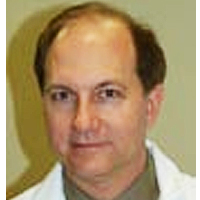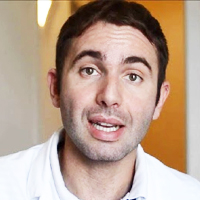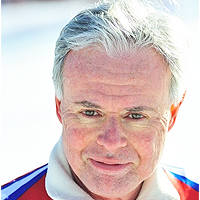Phytochemical Compounds and the Antifungal Activity of Centaurium pulchellum Ethanol Extracts in Iraq
Published on: 25th June, 2024
The current study included a variety of phytochemical substances that were extracted from Centaurium pulchellum and showed a wide range of medicinal properties from the plant's reproductive and vegetative parts against the pathogenic fungus Aspergillus flavus. The vegetative and reproductive components of Centaurium pulchellum were subjected to (GC-MS) analysis for phytochemical study. The data indicated that fungal activity was the highest. Four extract concentrations of 5, 10, 15, and 20 mg/ml were utilized in the investigation, and the diameter of the colonies measured at each concentration was 90.00, 36.00, 28.00, 18.00, and 0.00 mm, respectively.Nine bioactive phytochemical compounds were found in Centaurium pulchellum's vegetative and reproductive portions, according to GC-MS analysis of the chemicals. Another study reported phytochemical substances that: 1-H-Imidazole-2-carboxaldehyde, 1-methyl-;Acetaminophen; n-Hexadecanoic acid; Mercaptoacetic acid, 2TMS derivative; 1.2,3-Dimethyl-5-(trifluoromethyl)-1,4-benzenediol #; Mercaptoethanol, 2TMS derivative-; Bis-(3,5,5-trimethylhexyl) phthalate Tetrakis(trimethylsilyl) orthosilicate #;- 1.1-Isopropoxy-3,3,3-trimethyl-1-[(trimethylsilyl)oxy]disiloxanyl tris(trimethylsilyl) orthosilicate #.
Improving Cardiac Rehabilitation Referral Rates in Patients with Coronary Heart Disease from Diverse Communities Using an Electronic Order System
Published on: 29th June, 2024
Introduction: Despite the benefits of Cardiac Rehabilitation (CR), local and national CR referral and participation rates remain low when compared to established cardiovascular therapies, especially amongst racial/ethnic groups. Objectives: This study investigated the effects of the implementation of a CR program and electronic order set (EOS) in a large health system on CR referral and participation rates among a diverse group of patients with Coronary Heart Disease (CHD). Methods: A total of 360 patients from UCSD Health who presented with ACS were prospectively evaluated during initial hospitalization and 6- and 12-weeks post-discharge. The multivariable logistic regression model assessed referral and participation rates by week 1 and -12 post-discharge, adjusting for gender, age, race, ethnicity, geography, and referring physician subspecialty. Results: UCSD CR program implementation led referral rates to increase at week 1 (Pre- 38.6% and Post-54.9%, p = 0.003) and week-12 (Pre- 54.1% and Post- 59.8%, p = 0.386). Post-CR referrals were more likely at week-1 (OR: 1.93, 95% CI 1.27-2.95) and week-12 (OR: 1.26, 95% CI 0.79-2.00). EOS implementation increased referral rates at week-1 (Pre- 40.3% and Post- 58.7%, p < 0.001) and week-12 (Pre- 54.9% and Post- 60.4%, p = 0.394) with referrals more likely at week-1 (OR: 2.1, 95% CI 1.35-3.29) and week-12 (OR: 1.25, 95% CI 0.795-1.98). Participation in CR following EOS was more likely at both week-1 and week-12. Multivariable analysis revealed disparities in referral based on race, geographic location, and referring physician subspecialty. Conclusion: A CR program and EOS implementation were shown to increase referral rates with long-term potential for increasing referral and participation rates. Condensed abstract: This prospective study investigated the implementation of a Cardiac Rehabilitation (CR) program and Electronic Order Set (EOS) within the same health system on CR referral and participation rates. 360 patients with ACS were evaluated over 12 weeks. UCSD CR program and EOS implementation led referral rates to increase at week-1 and -12. CR participation was more likely to increase at week-1 and -12 following EOS. Multivariable analysis revealed disparities in referrals disproportionally affecting racial and ethnic minority groups and rural communities. CR and EOS implementation may increase CR referral rates for diverse patients with CHD.
Molecular Mechanisms and Potential Predictive Biomarkers in Advanced Non-small Cell Lung Cancer: A Summary of Current and Future Trends
Published on: 27th June, 2024
Non-small-cell lung cancer (NSCLC) accounts for 85% of lung cancer cases and is associated with different risk factors (smoking habits, gender, and age). In this scenario, many studies have been conducted to pursue improvement of survival, faster and better therapy response, reduced adverse events, and expanded available therapies and treatments against tumor resistance to drugs. These studies have focused on defining the most prevalent NSCLC biomarkers (EGFR, HER2, ALK, MET, ROS1, BRAF, KRAS G12C, HER3, NTRK, and NRG1) and their actionability. It is noteworthy that expressed kinase receptors can have overlapping mechanisms of activation of different pathways (JAK-STAT, MAPK, PI3K-AKT-mTOR, and PLC-c), which can lead to the same outcome of cell proliferation, migration, and survival resulting in increased tumor resistance to treatment. This review provides an overview of the latest findings regarding NSCLC treatment, emphasizing particular biomarkers and potential molecularly altered pathways implicated as targeted therapies. Additionally, it explores the clinical significance of the proposed treatments, their implication on progression-free survival, ongoing clinical trials, and their perspective of evolution so far.
Lived Experiences of Cervical Cancer Patients Receiving Chemotherapy at Cancer Diseases Hospital in Lusaka, Zambia
Published on: 28th June, 2024
Background: Cervical Cancer poses a significant global health challenge, especially in lowresource settings. It is a significant health problem worldwide, with over half a million new cases diagnosed each year, accounting for approximately 6.6% of all gynecological Cancer cases and over 300,000 deaths each year. In Zambia, it is the leading cause of mortality and morbidity among women. The number of cases has increased by approximately 40%. This study explored the lived experiences of Cervical Cancer patients undergoing chemotherapy at the Cancer Diseases Hospital in Lusaka, Zambia, focusing on their subjective experiences. By examining their journeys through chemotherapy, the study aimed to highlight the subtle complexities in which treatment impacts patients’ lives and well-being. Methods and procedures: Employing a qualitative descriptive phenomenological study design, in-depth interviews were conducted with 10 participants with diverse demographics. The sample size was determined by data saturation and saturation was reached at 10. Ethical protocols were ensured, and Study approval was obtained from UNZABREC and the National Health Research Authority. Thematic analysis was conducted on audio-recorded interviews with cervical cancer patients, ensuring confidentiality and accuracy while discerning significant patterns and themes in their narratives. Results/findings: Emotional experiences ranged from anxiety to gratitude. Psychological challenges encompassed coping mechanisms, stress management, emotional adjustments, and treatment-related fears. Socially, community support, workplace accommodations, and healthcare provider roles were key. Physical experiences revealed side effects managed through coping strategies. Financial challenges significantly impacted individuals and families. Conclusions and recommendations: The study revealed that cervical cancer patients undergoing chemotherapy face complex challenges spanning emotional, psychological, social, physical, and financial domains, underscoring the imperative for comprehensive patient-centered care. Recommendations suggest focusing on financial aid for cancer patients and tackling treatment expenses and insurance issues. The Cancer Diseases Hospital should establish multidisciplinary teams for holistic care, and enhance patient education efforts. Nurses should adopt strategies integrating cultural competence and patient-centered care to address diverse challenges during chemotherapy. These aim to enhance the well-being and care quality of Cervical Cancer patients.
Development and Evaluation of a mHealth app - (ReMiT-MS app) for Rehabilitation of Individuals with Relapsing-remitting Multiple Sclerosis - A Mixed Methods, Pragmatic Randomized Controlled Trial - Study Protocol
Published on: 3rd July, 2024
Background: Delaying or slowing functional loss is a valuable goal of Multiple Sclerosis (MS) rehabilitation. The mHealth app-based exercise rehabilitation intervention is expected to overcome barriers related to routine care of MS. Due to the ubiquitous presence of smartphones, they offer an excellent opportunity for remote monitoring, scheduled interaction with experts, and instruction for exercise in a home environment. Challenges in MS routine care include forgotten rehabilitation steps, limited access to local MS experts, and internal barriers such as low health literacy, mobility limitations, and fatigue, alongside external obstacles like service availability and transport costs.Objectives: To develop a mHealth app that is user-centered and context-specific for rehabilitation of MS symptoms, and to evaluate its clinical and cost effectiveness in individuals with RRMS.Methods: The proposed research will be conducted in two phases; the first phase (Phase 1a) will be focused on the development of mHealth app content (ReMiT-MS app trial I). The pilot phase (Phase 1b), where a prototype of the application will be designed, and its usability will be evaluated. Finally, in the second phase (Phase 2), the clinical and cost-effectiveness of the ReMiT-MS app for the rehabilitation of individuals with RRMS will be evaluated (ReMiT-MS app trial II).Conclusion: The findings of this proposed trial may provide a telerehabilitation platform for individuals with RRMS in a resource-limited setting and establish a low-cost healthcare delivery model. In addition, the results of this research work might open a new window in healthcare delivery in India and similar settings.Trial registration: CTRI/2022/09/045266 [Registered on 06/09/2022]
Microbiome-Gut-Brain Axis: AI Insights
Published on: 25th June, 2024
Microbiome-gut-brain axis represents a complex, bidirectional communication network connecting the gastrointestinal tract and its microbial populations with the central nervous system (CNS). This complex system is important for maintaining physiological homeostasis and has significant implications for mental health. The human gut has trillions of microorganisms, collectively termed gut microbiota, which play important roles in digestion, immune function, and production of various metabolites. Some current research shows that these microorganisms strongly influence the brain function and behaviour of individuals, forming the basis of the microbiome-gut-brain axis. The communication between gut microbiota and the brain occurs via multiple pathways: neural pathway (e.g., vagus nerve), endocrine pathway (e.g., hormone production), immune pathway (e.g., inflammation modulation), and metabolic pathway (e.g., production of short-chain fatty acids). Dysbiosis, or imbalance of gut microbiota, has been linked to mental health disorders such as anxiety, depression, multiple sclerosis, autism spectrum disorders, etc, offering new perspectives on their etiology and potential therapeutic interventions. Artificial Intelligence (AI) has emerged as a powerful tool in interpreting the complexities of the microbiome-gut-brain axis. AI techniques, such as machine learning and deep learning, enable the integration and analysis of large, multifaceted datasets, uncovering patterns and correlations that can be avoided by traditional methods. These techniques enable predictive modeling, biomarker discovery, and understanding of underlying biological mechanisms, enhancing research efficiency and covering ways for personalized therapeutic approaches. The application of AI in microbiome research has provided valuable insights into mental health conditions. AI models have identified specific gut bacteria linked to disease, offered predictive models, and discovered distinct microbiome signatures associated with specific diseases. Integrating AI with microbiome research holds promise for revolutionizing mental health care, offering new diagnostic tools and targeted therapies. Challenges remain, but the potential benefits of AI-driven insights into microbiome-gut-brain interactions are immense and offer hope for innovative treatments and preventative measures to improve mental health outcomes.
Pattern of Eye Disease in Nenwe Rural Eye Clinic, Nigeria: A Seven Year Review
Published on: 8th July, 2024
Background: The establishment of eye clinics in the form of rural outreach centers as a means of educating and providing eye care to rural residents was made necessary by the lack of eye care services in rural areas within Nigeria and the need to increase the cataract surgical rate among ophthalmologists in training. Understanding patterns of eye diseases in rural areas and eye health-seeking behaviors is crucial to achieving the goals of Vision 2020 especially for aspiring ophthalmologists.Aim and objectives: To examine the types of eye conditions observed at Nenwe, a rural outreach post of a tertiary hospital, and to evaluate their distribution.Methodology: A retrospective analysis of all patients who were seen at the community eye clinic during seven years was carried out. Records of patients at the Nenwe outreach eye clinic dating from November 2016 to August 2023 were examined, yielding information on patients examined during the period of study.Results: Glaucoma was the most common eye condition to be diagnosed. Cataracts were the second most common eye condition accounting for 20.8%. Other common eye illnesses were refractive error (9%), pterygium (7%), and allergic eye disease (6%) with 129, 101, and 95 cases, respectively. Retinal detachment (51 cases), prebyopia (47 cases), corneal lesion (58 cases), and dry eye condition (47 cases) were less common.Conclusion: The results show the burden of eye disorders in the Nenwe rural community and the importance of community-based eye care services.
Experiences of Consumers on the Health Effects of Fake and Adulterated Medicines in Nigeria
Published on: 4th July, 2024
Medicines are used to cure and treat ailments, relieve or eliminate disease symptoms, and slow down the disease process. Any attempt to disrupt this natural medicine process, using falsified medications, spells doom to a consumer of such medication. The challenge of fake medicines is a global one and affects developing and developed nations and currently assumes great significance as a result of globalization challenges, which have flattened the entire world, hence removing barriers to the movement of products and services. The cross-sectional survey was conducted, using six local government areas of Anambra State in South-East Nigeria, namely Awka, Nnewi, Onitsha, Aguata, Ogbaru, and Anaocha, among adults aged 18 years and above. A minimum sample size of 500 was calculated and stratified sampling was employed to select respondents in order to ensure that various population groups, the upper class, middle class, and lower class were represented.This research has shown that falsified medicine is an evil wind that blows nobody any good. It negatively affects every aspect of the citizen’s livelihood, ranging from their health, which manifests as treatment failures, deformities, loss of life to death, to loss of confidence in the healthcare providers, revenue losses to individuals, healthcare providers, manufacturers, and finally corruption of the genuine medicines supply chain with fake and adulterated medicines.The study has clearly shown the experiences of residents of Anambra State, South-East Nigeria with fake and adulterated medicines and also services as a wake-up call to medicines regulators like NAFDAC, PCN, the PSN, and Federal Ministry of Health to declare a state of emergency on the fight against fake and adulterated medicines and make enabling laws that are punitive enough towards the fight against this scourge, so that the healthcare and well-being of Nigerians would be assured at all times.
The Influence of Gravity on the Frequency of Processes in Various Geospheres of the Earth. Biogenic and Abiogenic Pathways of Formation of HC Accumulations
Published on: 9th July, 2024
Based on the results obtained in the study of the interaction of geological and biosphere processes, we found out that there is a close relationship between them. It was also found that the gravity of the bodies of the solar system on the Earth plays a significant role in the above relationship. The effect of gravity was demonstrated on the movement of lithosphere plates, on the processes in the atmosphere and hydrosphere, on related climatic cycles, and the biosphere processes, including "living" organisms' evolution and their mass extinctions. The periodicity of these processes due to gravity is shown. It is expressed in the alternation of short-term orogenic periods of the beginning of the processes with long-term geosynclinal periods of their development and completion. Both periods constitute the repetitive orogenic cycles. The relationship of the cycles with the evolution of photosynthesis, as well as with related Organic Matter (OM) accumulation in sediments after mass extinction of organisms, including OM transformation leading to the formation of Hydrocarbon (HC) accumulations, is shown. Biogenic processes accounting for the accumulation and transformation of organic matter in sediments constitute the biogenic pathway of the formation of hydrocarbon accumulations. It is shown that the influence of gravity extends to the processes in the inner geospheres, including the movement of magma in the asthenosphere under the lithosphere shell, to the movement of hydrogen gas coming from the Earth's core, combining with volatile compounds of elements present in magma, as well as to the rifting process. It is shown that rifting processes lead to the formation of gaseous HC accumulations and constitute a pathway called abiogenic. The obtained results shed light on the peculiarities of the formation of HC accumulations by biogenic and abiogenic pathways, allowing prediction of their chemical characteristics. This is essential when searching for oil and gas and planning exploration works.
The Effects of Interval and Traditional Resistance Exercise on Hormonal Control of Adipose-tissue Lipolysis in Healthy Young Men
Published on: 11th July, 2024
Purpose: Lipolysis is regulated by lipolytic hormones, like insulin, cortisol, growth Hormone (GH), and catecholamines. Unregulated lipolysis results in the accumulation of free fatty acids (FFAs), leading to dysfunction of cells and death. Thus, the main aim of this study was to determine the effects of interval and traditional resistance exercise on hormonal control of adipose-tissue lipolysis in healthy young men.Methods: Twelve healthy males (Mean ± SD; age, 25.5 ± 3.1 years; Body mass index, 24.2 ± 2.0 kg/m2) performed tradition resistance exercise (TRE) at 80% of 1RM (3 sets of 6 repetitions) with 2 min passive recovery, and an interval resistance exercise (IRE) trial at 60% of 1RM (3 sets of 6 repetitions) followed by active recovery (1 set of 6 repetitions at 20% of 1RM). Three blood samples were taken before and immediately after exercise, and after one-hour recovery and were analyzed to measure epinephrine, norepinephrine, cortisol, and GH. Results: Statistical analyses of the data revealed that concentrations of cortisol and GH increased in response to resistance exercise and significantly decreased (p < 0.05) during the recovery period. Although there were no significant differences between the two protocols for cortisol concentration, GH increases following IRE were profoundly higher than TRE protocol. Epinephrine and norepinephrine increased (p < 0.05) in response to both resistance exercise trials, though, no between-group differences were found for these variables. Conclusion: The results of our study showed increases in GH, cortisol, epinephrine, and norepinephrine in two resistance exercise protocols which may lead to increases in fat oxidation.
Design and Construction of Automatic Facemask and Body Temperature Scanning Entry Barrier Machine
Published on: 10th July, 2024
In the context of the global pandemic, public health screening has become paramount as the whole world including developed countries is going through a health crisis. A face mask prevents transpiration and protects against airborne transmitted bacteria or viruses. In the previous scenario of coronavirus, it was critical to eradicate this sickness and preserve our lives. Hence, prevention is better than cure becomes true. Accordingly, many precautionary measures were taken to reduce the spread of the virus. One such method of prevention is wearing a mask and regular monitoring of body temperature. This research dealt with the design and construction of an automatic entry barrier machine that integrates both facemask detection and scanning of individuals exhibiting elevated body temperature functionalities without any human interference. This was accomplished by simulating and synergizing a microprocessor (Raspberry Pi 3 Model B+), a Pi camera, an Infrared Non-contact Temperature sensor, a servo motor, and other components. The barrier arm opens and allows entrance at normal temperature by indicating a green light, displaying ‘allow’ on the LCD, and signaling once or preventing entrance at an elevated unacceptable temperature by indicating a red light, displaying ‘not allowed’ on the LCD, and signaling five (5) times.
Beta-1 Receptor (β1) in the Heart Specific Indicate to Stereoselectivity
Published on: 10th July, 2024
The β1 receptor is one of the three beta receptors present in the human body, namely β1, β2, and β3. The β1 receptor is predominantly located in the heart, where it plays a crucial role in regulating the heart rate and the force of contraction, thereby increasing the cardiac output and the efficiency of blood pumping throughout the body. This receptor is targeted by a variety of pharmaceutical agents known as beta-blockers, which are commonly used in the treatment of cardiovascular conditions such as hypertension, angina, and arrhythmias.The β1 receptor exhibits stereoselectivity, meaning that different enantiomers (chiral molecules) of beta blockers can have varying levels of effectiveness and side effects. This study focuses on the stereoselectivity of the β1 receptor and the clinical implications of this property. It includes an examination of various β1 blockers, such as propranolol (a non-selective beta blocker), and selective β1 blockers like atenolol, bisoprolol, nebivolol, metoprolol, esmolol, acebutolol, and betaxolol. Each of these drugs has a unique chemical structure, with specific functional groups that contribute to their selective action on the β1 receptor.Furthermore, the β2 receptor, which is mainly present in the bronchi and bronchioles, is responsible for bronchodilation, and the β3 receptor, found in the bladder, helps reduce urinary urgency. Understanding the distinct locations and functions of these receptors allows for the development of targeted therapies with minimal off-target effects.This review highlights the importance of stereoselectivity in the development and use of β1 blockers, discussing their chemical structures, pharmacological activities, and therapeutic uses. It also explores the potential for future research and development of more selective and effective β1 receptor agonists and antagonists, which could offer improved therapeutic outcomes for patients with cardiovascular diseases.This study underscores the significant role of the β1 receptor in cardiovascular health and provides insights into the ongoing advancements in beta-blocker therapy. By delving into the stereoselectivity and specific actions of these drugs, the research aims to enhance the understanding and optimization of β1 receptor-targeted treatments in clinical practice.
Disposable Diapers in Infancy and Their Potential Detrimental Impact on Male Fertility in Adulthood
Published on: 22nd July, 2024
The overall human fertility rate has been continuously declining across the globe for a number of reasons. This review summarizes data, which proposes that the use of disposable diapers for newborns and infants may incur reproductive harm in adulthood. More than 70 years ago, a disposable synthetic waterproof baby diaper was developed, mainly to reduce the burden of working mothers. Modern diapers feature the same original design, which contains one unit of disposable material wrapped around the perineum to collect urine and feces. This design results in an increase in internal area temperatures by 2-4 °C, which can be detrimental to the function and development of reproductive cells. Moreover, the standard diaper template promotes the free passage of feces, including fecal bacteria, to the genitals, which can lead to urogenital infection and reproductive impairments. The available clinical data suggest that diaper use during infancy may have a negative impact on fertility after puberty. There is a critical need for additional studies to better assess the impact of diapers on reproductive health.
Procedure for Determining Root Canal Length in Endodontics: A Mathematical Approach
Published on: 15th July, 2024
Intraoral and extraoral radiographic investigations play a fundamental role in all dental disciplines. For endodontic treatment it is necessary, in addition to measuring with apex locators, also various radiographs in the preoperative, operative, and final control phase.Even in surgical practice, and especially in implantology, the radiographic investigation remains essential to limit errors or complications.The mathematical approach for the determination of the length of work in endodontics is a simple and costless procedure. This work intends to expose the reasons why it should, in certain cases, be taken into consideration.
From Ashes to Life - The Indestructible D. radiodurans
Published on: 15th July, 2024
Deinococcus radiodurans (D. radiodurans) was accidentally discovered in 1956 when cans of ground meat were exposed to massive doses of ionizing gamma radiation, intended to kill dangerous bacteria. The bacterium can survive doses of radiation, even up to 1,000 times that which is deadly to humans. Among biologists and biophysicists, D. radiodurans is often humorously called “Conan the Bacterium.” This extreme radioresistance of the bacterium has been attributed to its ability to protect the proteome from ROS, which originates from water radiolysis, and also to carry out the effective repair of a large amount of DNA damage.
Enhancing Physiotherapy Outcomes with Photobiomodulation: A Comprehensive Review
Published on: 23rd July, 2024
Physiotherapy treatments employ complex approaches tailored to the patient’s diagnosis. Exercise is the primary strategy to enhance rehabilitation processes for most individuals. However, electrophysical agents, such as Photobiomodulation (PBM), that utilize specific wavelengths of light to penetrate tissues and stimulate cellular activity, can modulate various biological processes and may improve physiotherapy outcomes. This non-invasive treatment can reduce pain and inflammation, promote tissue repair, and accelerate tissue healing. Currently, PBM has numerous applications, including pain and inflammation treatment, wound healing (such as diabetic foot ulcers, pressure ulcers, post-surgery wounds, and skin grafts in burn injuries), and the management of musculoskeletal disorders (such as arthritis, tendinopathies, muscle injuries, and spinal disorders). It is also utilized to improve muscle performance and recovery in rehabilitation and sports. Additionally, transcranial PBM has shown promise in enhancing neurorehabilitative processes by facilitating the recovery of cognitive and motor functions in various types of lesions. The safety and efficacy of this treatment allow it to be incorporated alongside regular exercises and manual therapies as an adjunctive treatment, potentially enhancing outcomes in different areas of rehabilitation.
Extracorporeal Shock Wave Combined with Traditional Chinese Medicine Bone-setting Manipulation for External Humeral Epicondylitis: A Randomized Clinical Trial
Published on: 23rd July, 2024
Objective: The purpose of this study was to evaluate the clinical efficacy of extracorporeal shock waves combined with traditional Chinese medicine bone-setting manipulation for external humeral epicondylitis. Methods: Ninety-two patients with external humeral epicondylitis were randomly divided into an observation group and a control group. Patients in the control group were treated with extracorporeal shock waves while those in the observation group with traditional Chinese medicine bone-setting manipulation based on the control group. Patients in both groups were evaluated by the Visual Analogue Scale (VAS), Mayo Elbow Performance Score (MEPS), and Disabilities of the Arm, Shoulder, and Hand Questionnaire (DASH) before and after treatment. The inflammatory factors such as IL-6, IL-10, TNF-ɑ, and clinical outcomes were contrasted before and after treatment. Results: There were statistically significant differences in VAS score, MEPS score, and DASH score between the two groups before and after treatment (p < 0.05). The observation group exhibited a more pronounced improvement in each score compared to the control group. Post-treatment, the inflammatory factors of both groups were significantly lower than pre-treatment levels (p < 0.05), with the observation group showing a more noticeable decrease. The overall effectiveness of the observation group was higher than that of the control group, and the difference was statistically significant (p < 0.05).Conclusion: The combination of extracorporeal shock wave therapy and traditional Chinese medicine bone-setting manipulation can effectively alleviate pain symptoms and improve dysfunction caused by external humeral epicondylitis, while also reducing inflammatory factor expression. This combined treatment may prove more effective than extracorporeal shock wave therapy alone.Clinical Trial: Registration: ChiCTR2200066075.
Causal Inference for Scoliosis and Strabismus: A 2-sample Mendelian Randomization Study
Published on: 24th July, 2024
Background: Some studies have shown an association between spinal curvature and strabismus, but the genetic association has not been clarified. Therefore, the present study is proposed to be a Mendelian randomization study aiming to investigate the genetic causal association between spinal curvature and strabismus.Purpose: Genetic causal associations between strabismus, convergent concomitant strabismus (Ccs), Divergent concomitant strabismus (Dcs), Other specified and unspecified strabismus (Osus), Other strabismus (Os) and spinal curvature were investigated by a bidirectionalMendelian randomization study to provide a basis for the prevention and treatment of spinal curvature.Methods: Significant and independent Single Nucleotide Polymorphisms (SNPs) in genome-wide association studies were selected as Instrumental Variables (IVs) for Mendelian Randomization (MR) analysis. Inverse Variance Weighted (IVW), MR-Egger regression, Weighted Median (WME), Simple Mode (SM), and weighted mode (WM) were used to analyze causal association; Heterogeneity and multiplicity tests were also performed and analyzed using the leave-one-out method to assess the stability of the results.Results: MR and reverse MR were utilized to assess the impact of scoliosis on strabismus, revealing that the 95% confidence intervals of all instrumental variables’ OR values spanned 1 and the p values were all above 0.05. These results indicate a lack of evidence supporting a causal relationship between scoliosis and strabismus. Conclusion: There is currently no conclusive evidence of a genetic causal relationship between scoliosis and strabismus, including their subtypes. Further laboratory studies are needed to confirm these findings, and future research with larger sample sizes is necessary to provide more robust support.
Catalytic Oxidation-like Nuclear Nano-fusion; Fractal Involving of Room Temperature Magnetically Induced μ-Catalyzed Fusion
Published on: 24th July, 2024
The nuclear fusion reaction can be catalyzed in a suitable fusion fuel by muons (heavy electrons). “For the fractal relations, ranging from DNA knots to solar neutrino flux signals”, ever derived of scale-invariant properties distinguished between classical invariant theory & quantum invariant theory subfactors. Accompanying isomorphic & Connes FusionTensor Product retrieved to μ-catalyzed fusion where surroundings of room temperature fusion driven by the balance in mtDNA fusion & fission. On behalf of the nanometer dimension of the radius of heavy electrons & wavelength of UV-light, it assumed that muons can be produced by oxidation-like decay when UV-light impinging water.
Mesenchymal Stem Cell Therapy for Hepatic Encephalopathy Due to Advance Liver Cirrhosis: Case Study
Published on: 25th July, 2024
Mesenchymal stem cell (MSC) transplantation may be an alternative to liver transplantation for patients with end-stage liver disease. A 24-year-old patient with Hepatic Encephalopathy due to alcoholic liver cirrhosis underwent UCMSC transplantation because there were no donors available for liver transplants involving adult deceased and living individuals. The patient was given allogeneic Umbilical cord-derived MSCs, which were then cultured following accepted practices. Subsequently, the UCMSCs were infused through the intravenous route 3 times at the interval of 30 days. Serum bilirubin, globulin, and ammonia levels were improved after the infusion and the morphology of the liver and spleen had also improved.
















